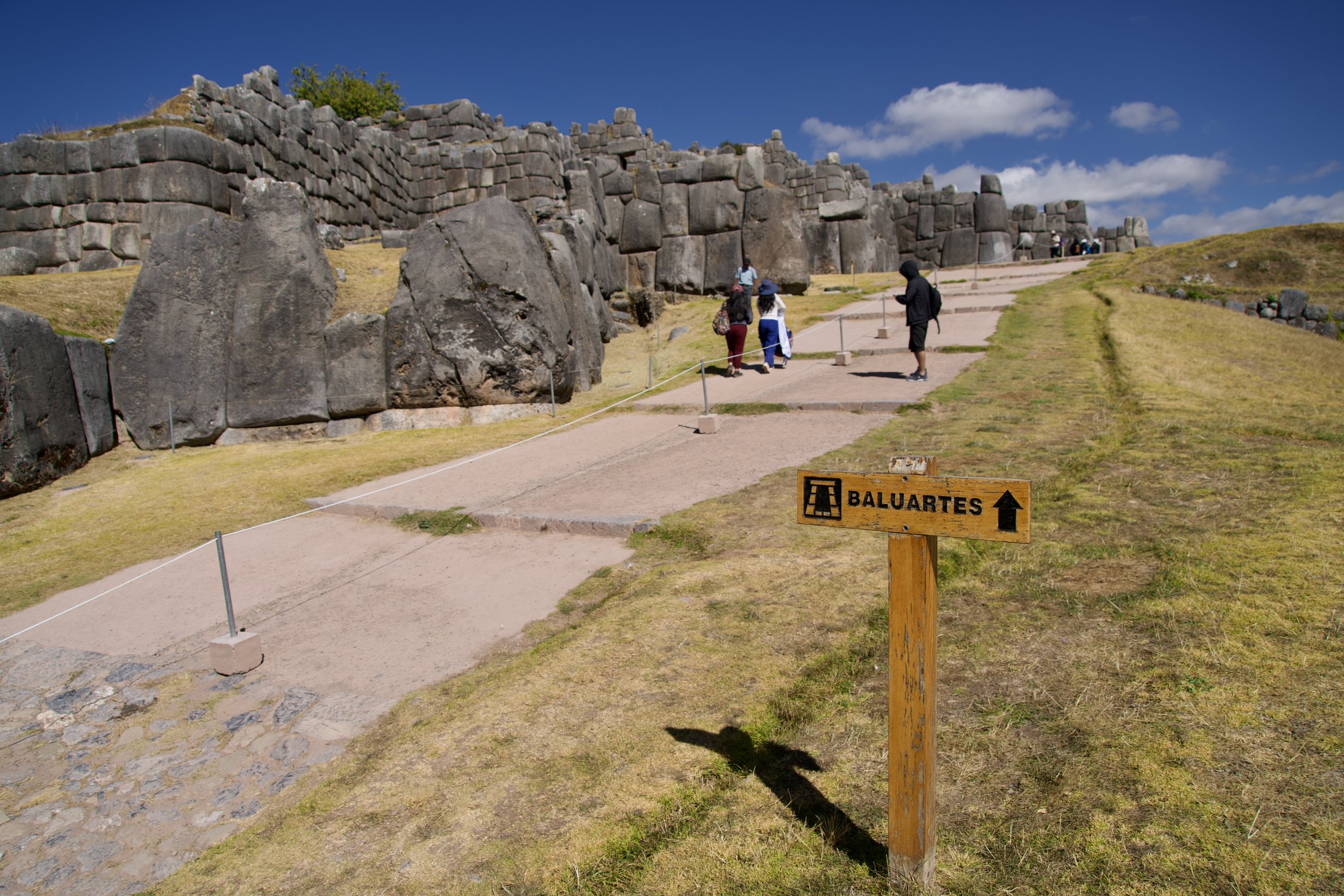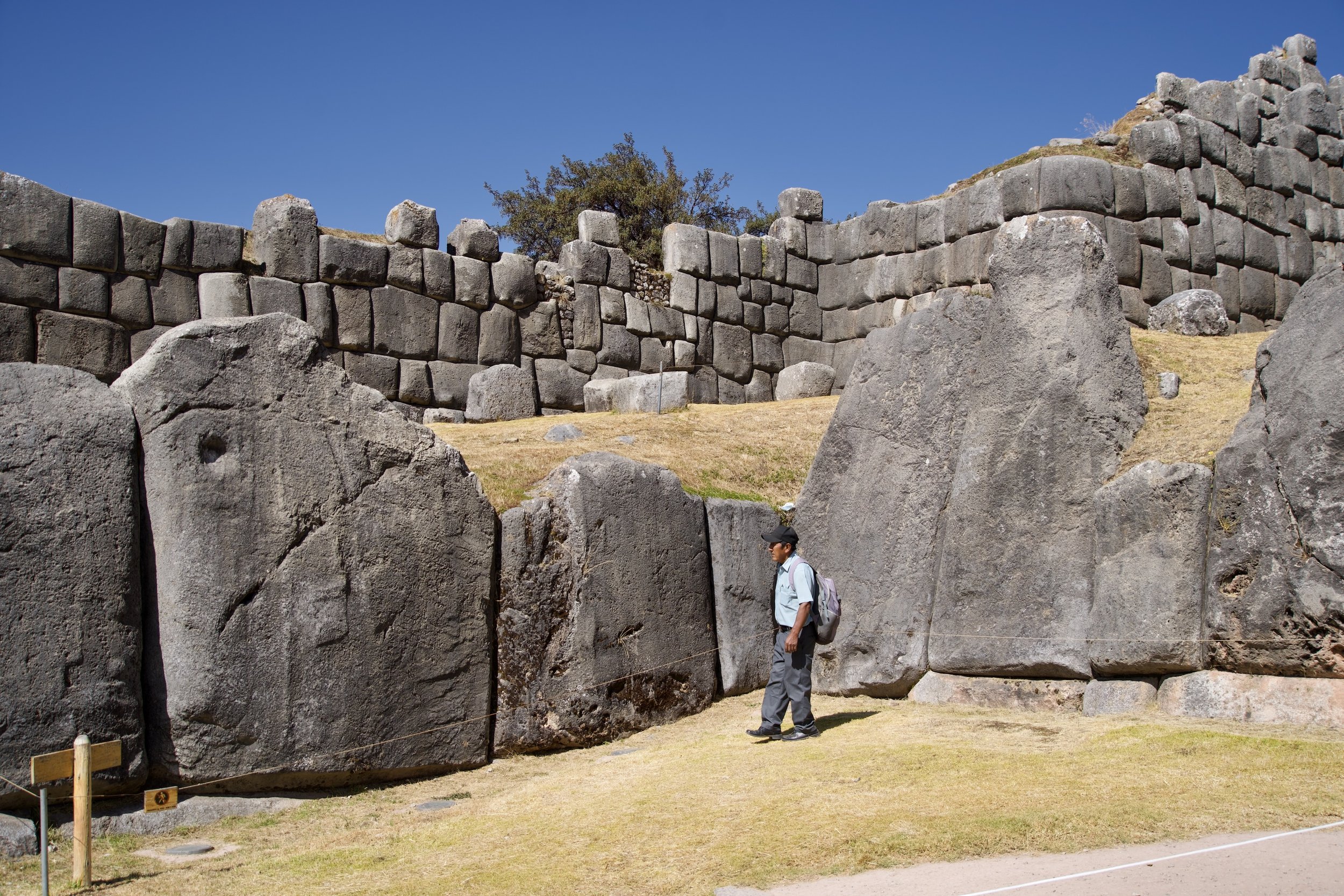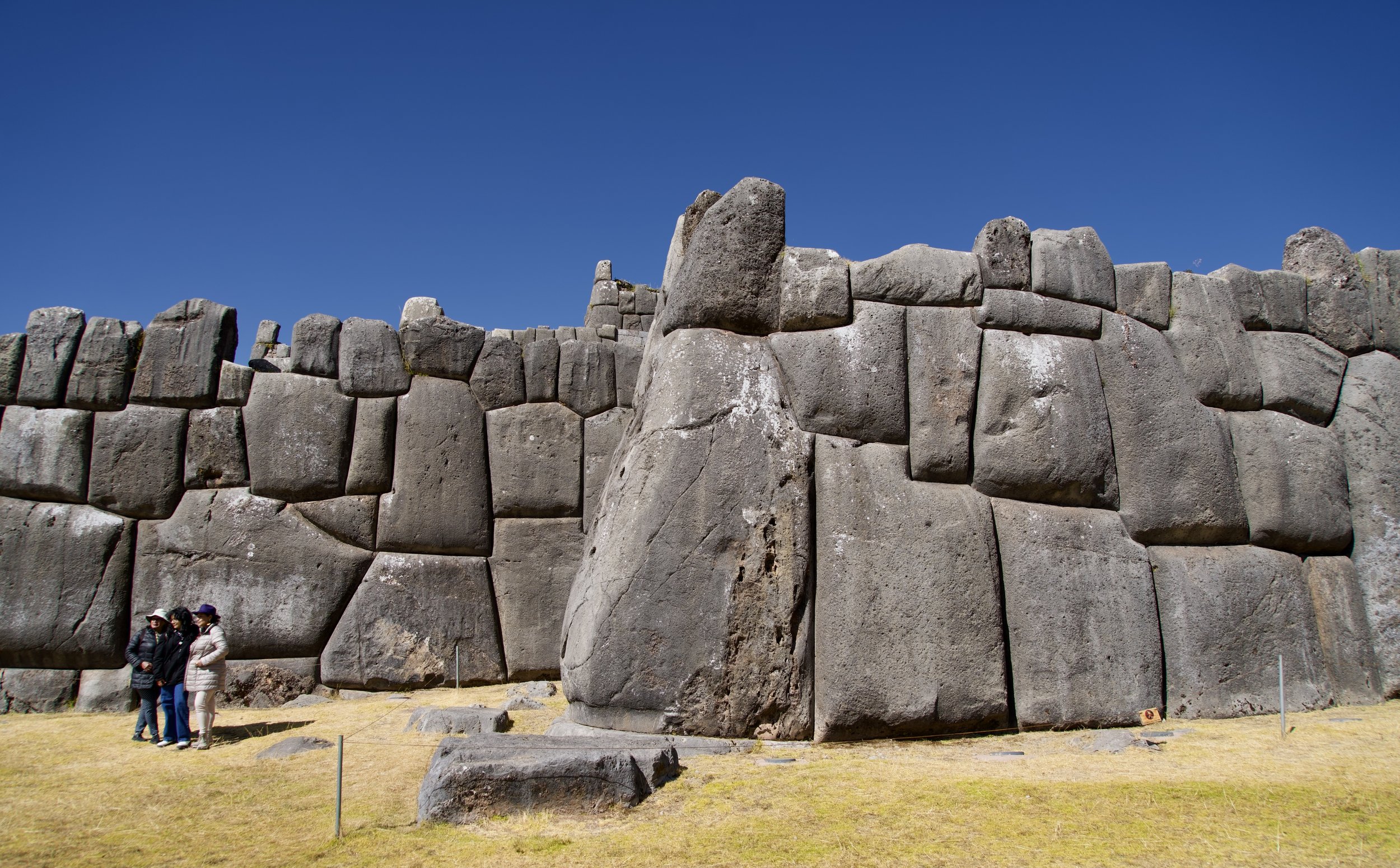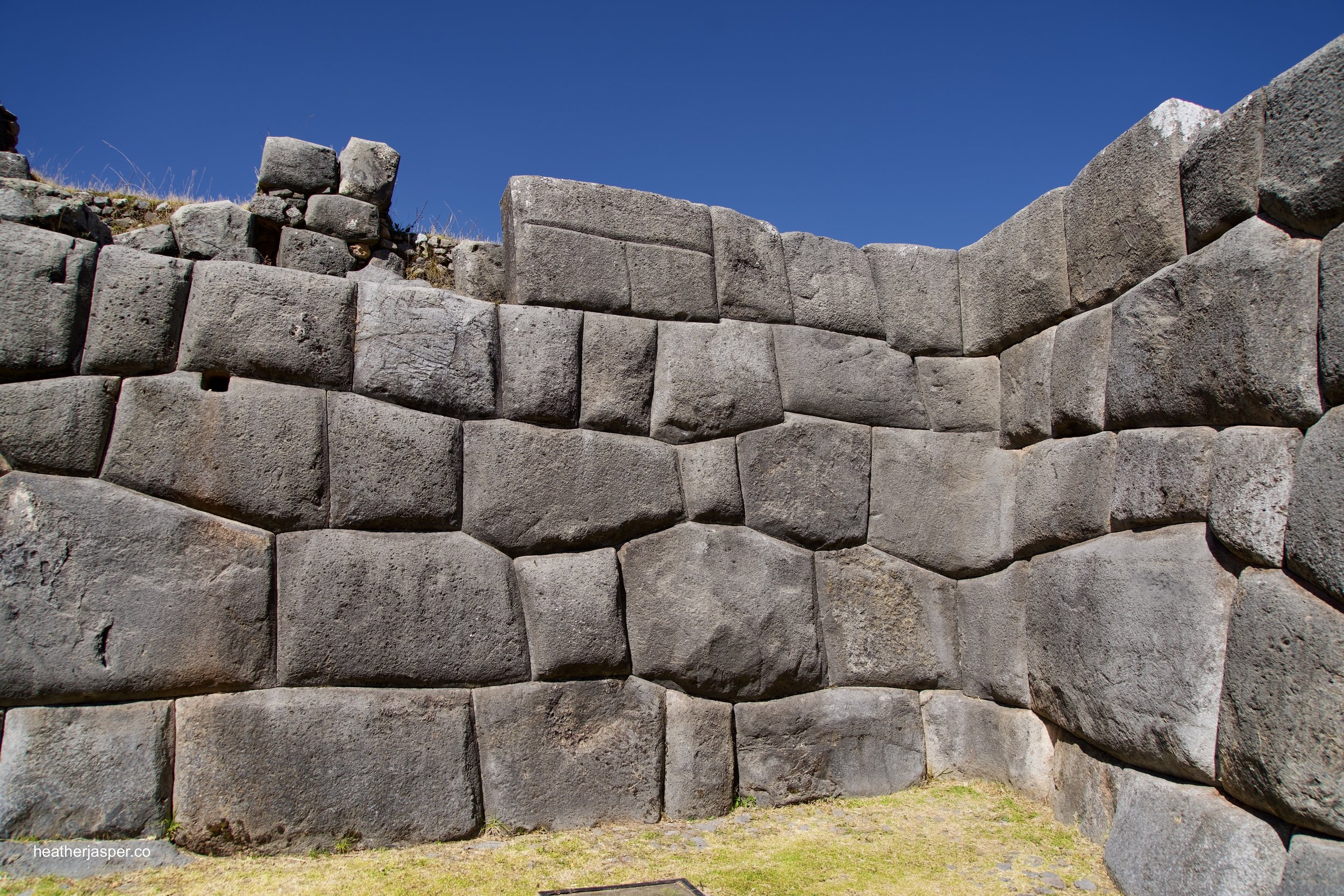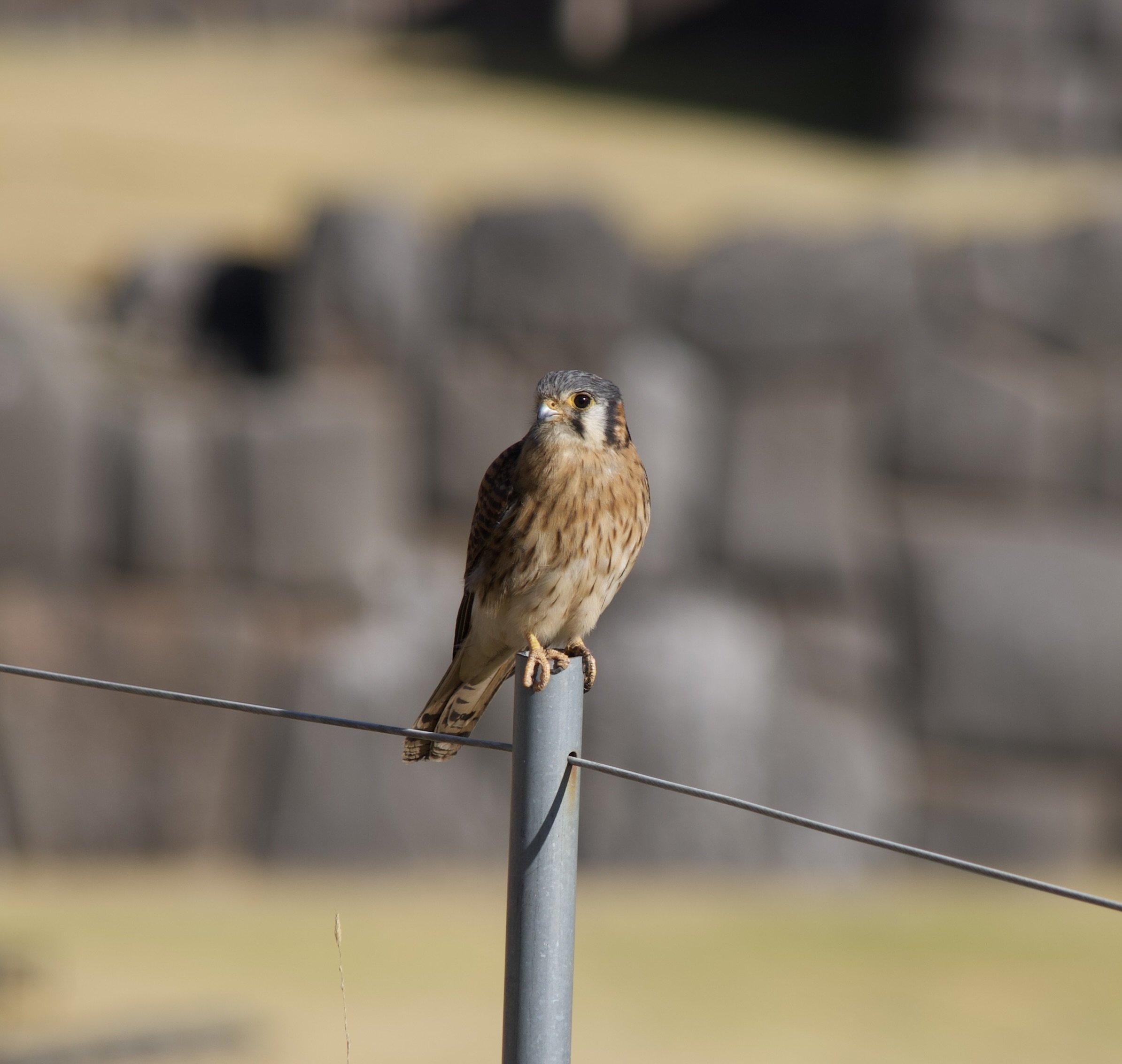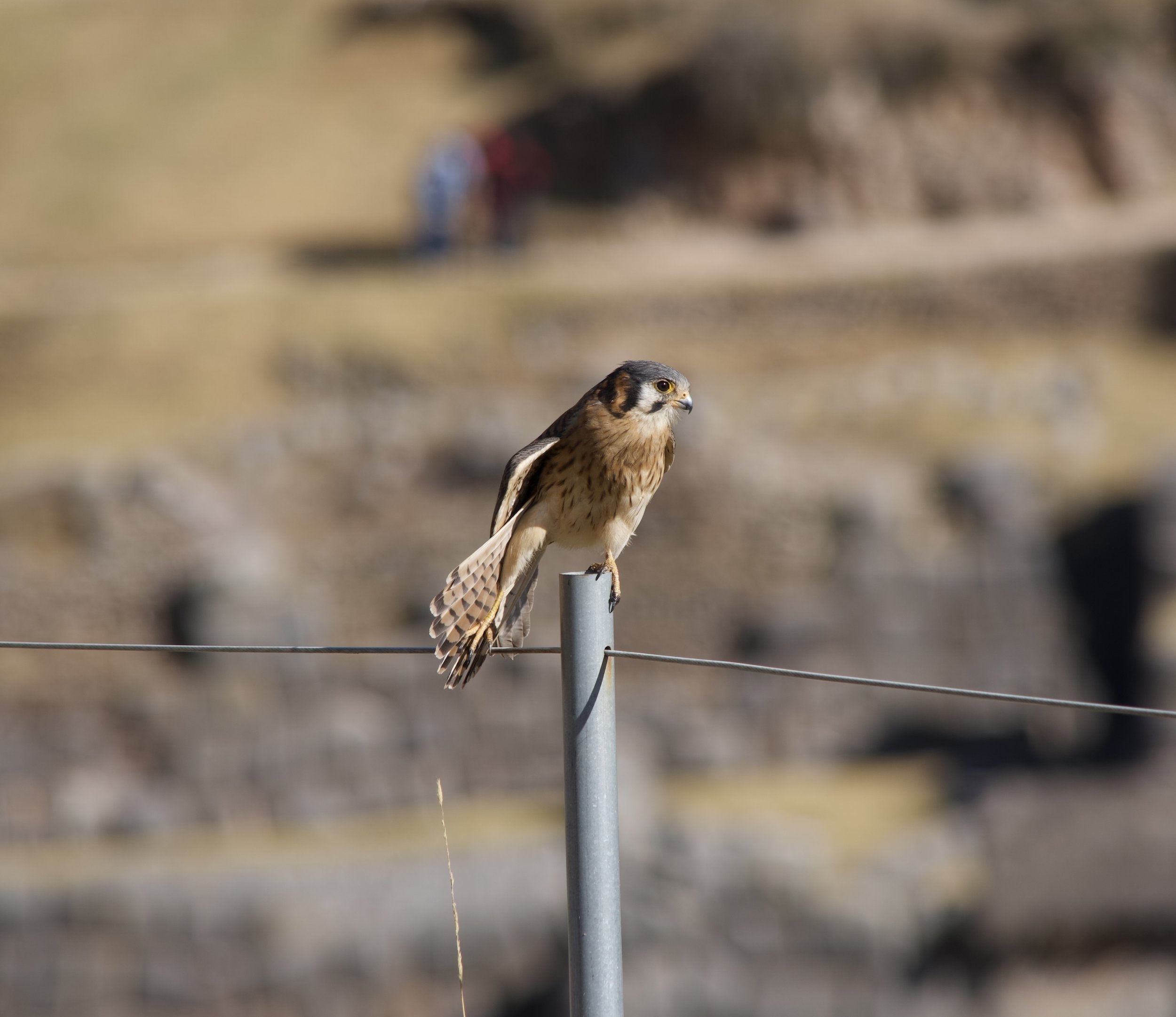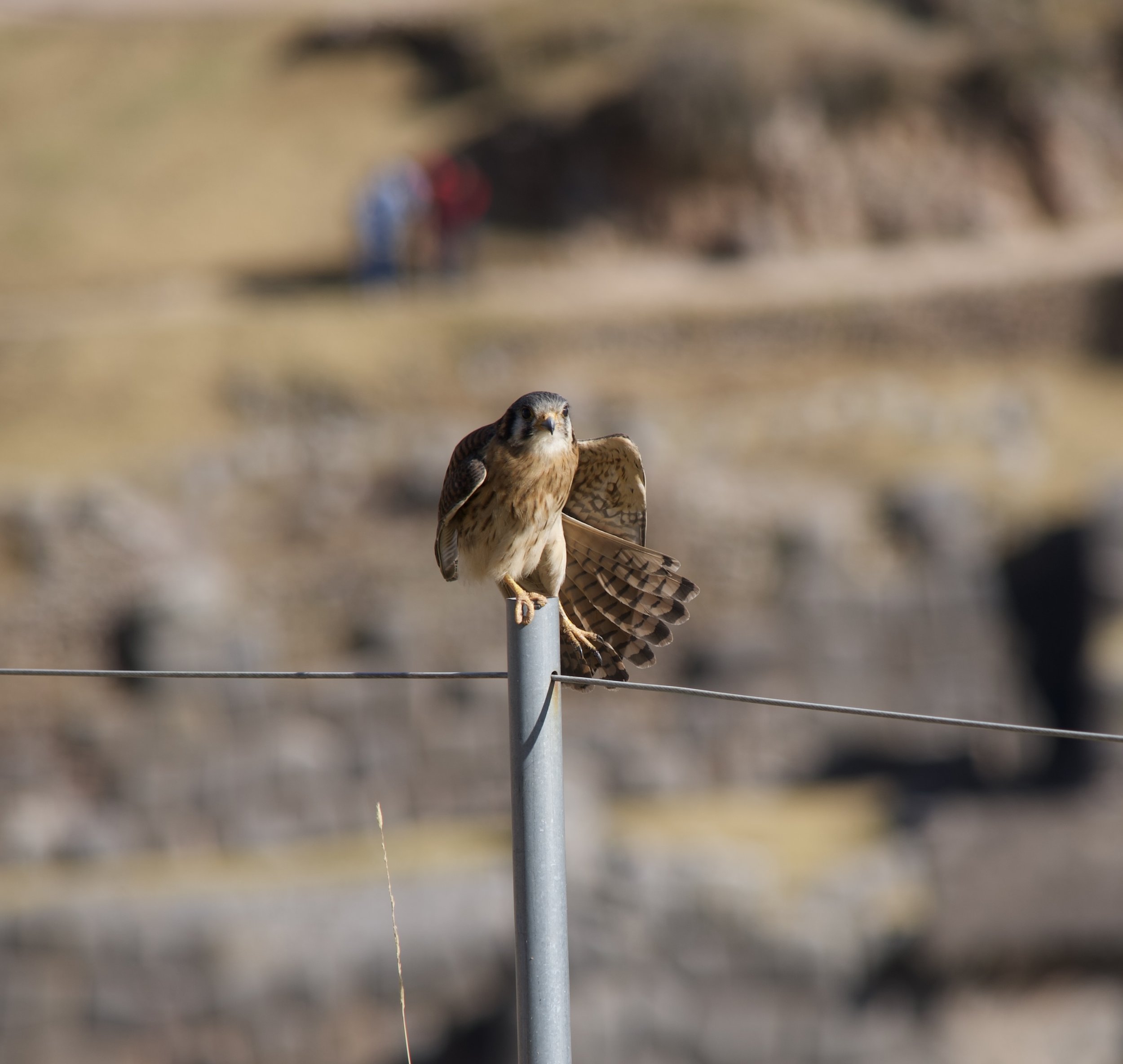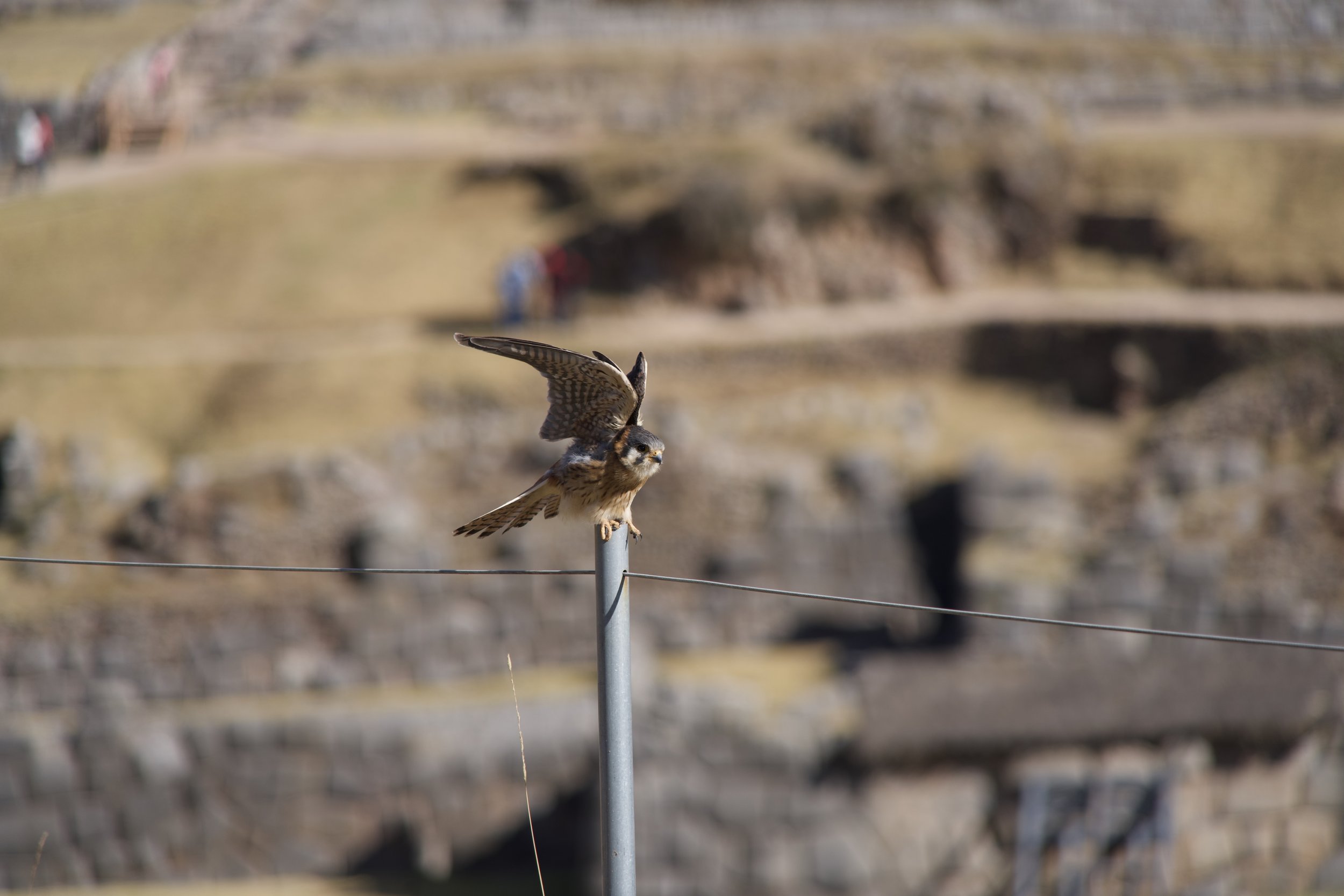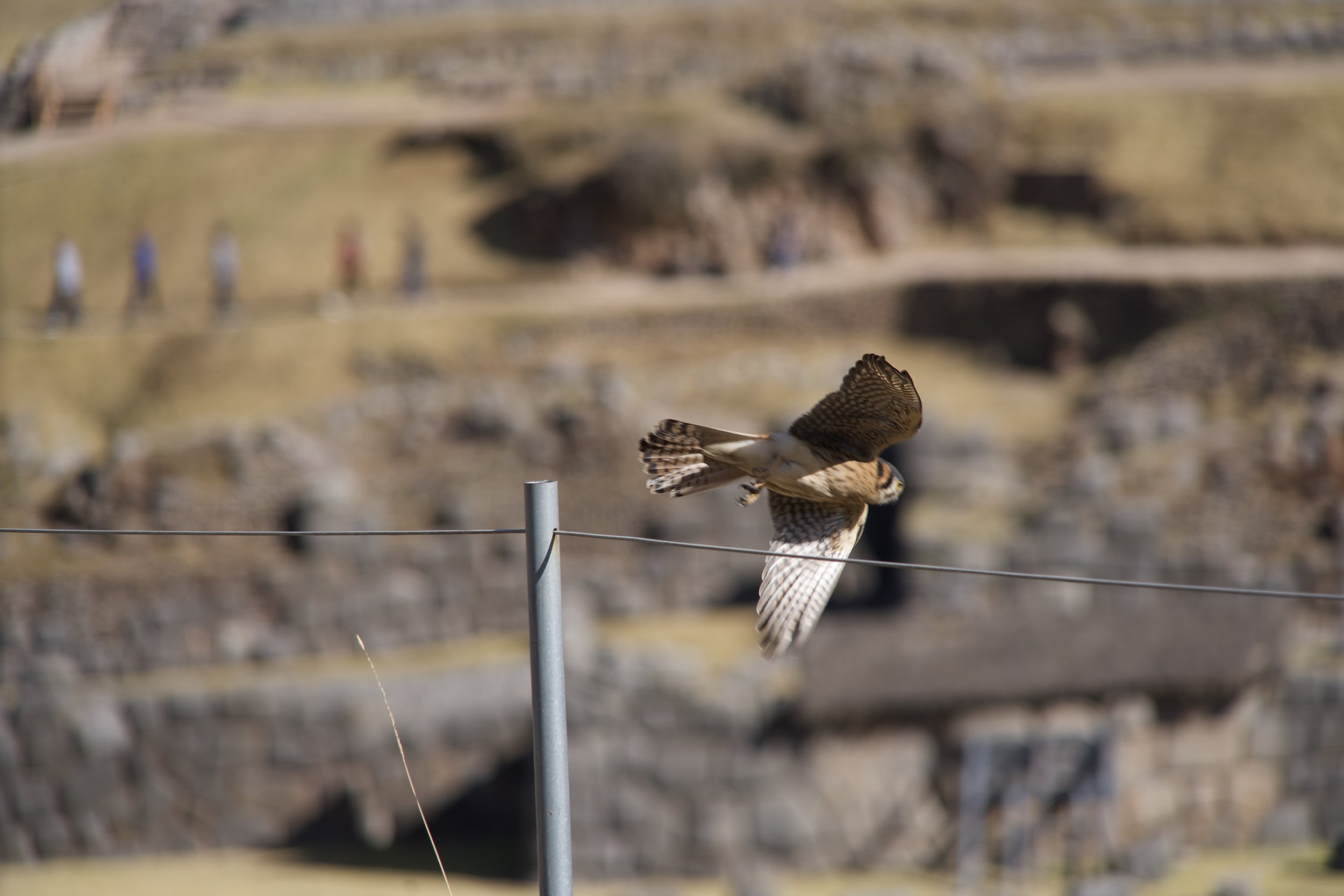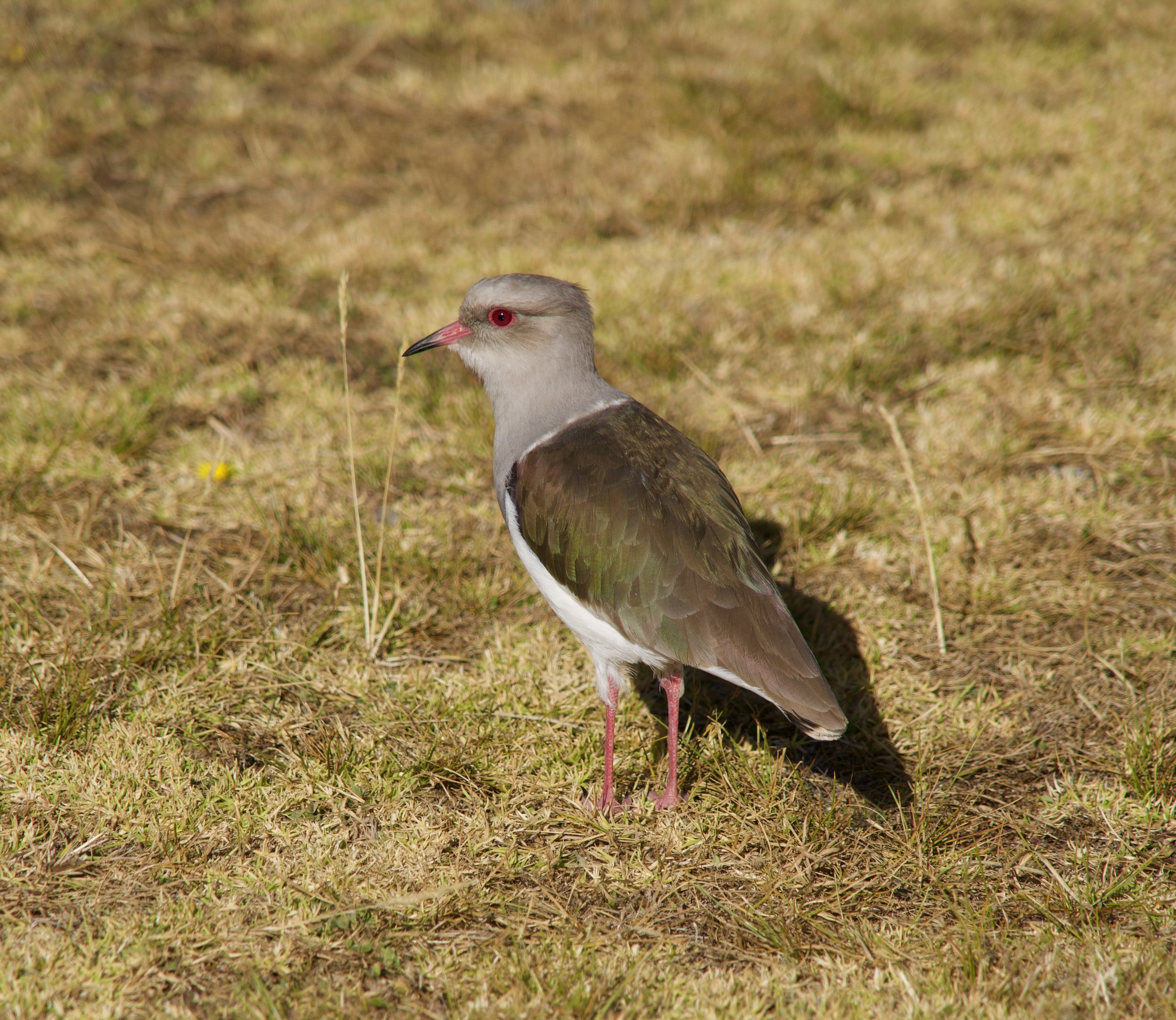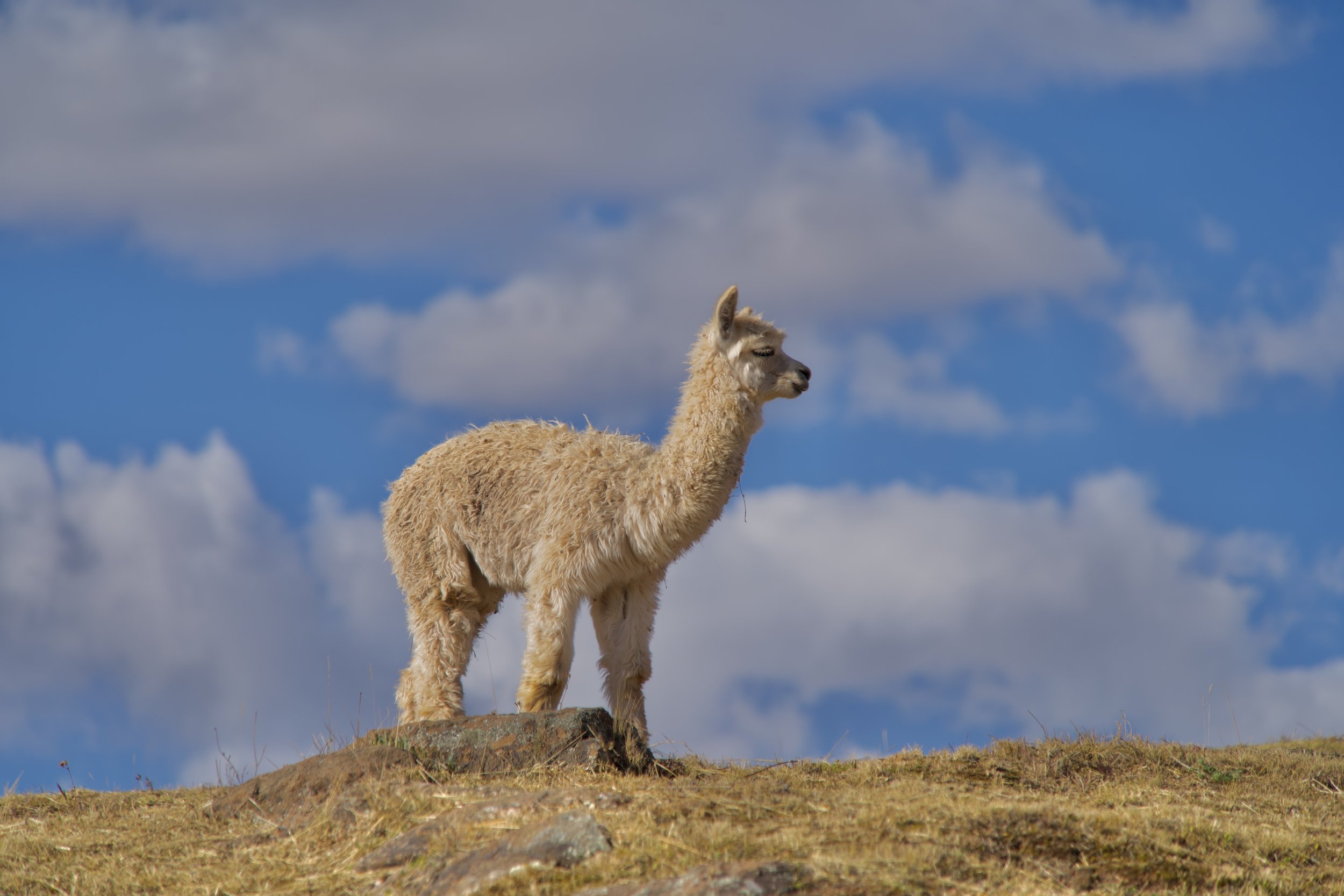Sacsayhuaman
Pronounced sack-sigh-wah-man, this is the most important archeological site in Cusco. Most archeologists attribute it to the Inca Pachacutec and agree that it was built in the 15th century. Some archeologists are now saying that it was more likely built much earlier, perhaps pre-Inca. Regardless, what you see today is only about 40% of what the Spanish found in the 16th century. Only the largest stones that the Spanish couldn’t move remain. Most of it was taken directly downhill to build the cathedral on the Plaza de Armas and several other churches and colonial buildings.
The stones that were too big to move can weigh up to 125 tons. The corner of each zigzag in the main wall is anchored by a massive stone between 90 and 125 tons. Scholars have found evidence that over 20,000 people worked on the construction and the stones were brought from as far as 12.5 miles (20km) away. The entire site is almost twelve square miles and encompasses several archeological sites, including Inkilltambo.
The Inca built their cities in the shape of sacred animals and Cusco was designed in the form of a puma, with Sacsayhuaman as the head. The name means “place where the falcon is satisfied” in Quechua, likely because of the constant presence of falcons hunting in the area. The name Huaman (falcon) is a common last name for Quechua families.
Sacsayhuaman Inti Punku
Inti Punku means Sun Gate and most Inca constructions have at least one. They are always situated so that the sun comes directly through the doorway at one of the solstices. The Inti Punku at Machu Picchu is the most famous, though they all serve the same purpose.
The Inca divided their cities in half, just as they divided everything in half. They believed that everything had it’s counterpart in a sacred duality: sun & moon, day & night, men & women, etc. Cities were divided in the upper half “hanan” and the lower half “hurin.” In Cusco, the sacred temple for the hurin was Qorikancha and the sacred temple for hanan was Sacsayhuaman.
Muyuqmarca
This is the base of the Muyuqmarca tower, from which the Inca general Titu Cusi Huallpa famously threw himself during a battle in 1536, when it was clear the Spanish were going to win.
Many guide books still record Sacsayhuaman as a fortress, though archeologists have long since proved that was incorrect. Sacrifices from throughout Tahuantinsuyu, the Inca’s realm, have been found there. The Inca didn’t make sacrifices at military fortresses, but they frequently did so at temples. When you see the massive walls, it’s easy to understand the confusion. The zigzag shape looked defensive from a European perspective and the giant stones would have made the walls impenetrable. It was used by the Inca during the Rebellion of Vilcabamba in 1572, which may have added to the confusion.
Sacsayhuaman map
This is the main part of the Sacsayhuaman Archeological park, which includes several other places on the east side of the map. The Llaullipata entrance is the easiest to get to by taxi but the Rumipunku entrance on the Christo Blanco side is where you arrive by bus or if you follow my walking instructions (below).
Entrance fees
The entrance fee is part of the Boleto Turístico de Cusco, which is available for purchase at any of the sites on the ticket. Only cash is accepted, not credit card. You can buy the partial ticket for just the sites around Cusco for s/70, or the full ticket which includes archeological sites in the Sacred Valley for s/130.
Guides
Guides are always available at the entrance, where you buy your ticket. Visitors are not required to hire a guide, so you can wander around on your own if you wish. However, most of the guides there are quite knowledgable and can tell you a lot about the Inca besides just the history of Sacsayhuaman. The best guides put each part of the ruins in perspective, explaining why the Inca built as they did and what each place signified. If you do decide to hire a guide at the entrance, ask them a bit about themselves, such as how long they’ve been guiding and where they’re from. Assessing their knowledge is a great way to assess their language skills, in case you don’t speak Spanish.
Inti Raymi Preparations
One advantage of a guide is that they can explain how Sacsayhuaman is used to this day as the site of the main parts of the Inti Raymi celebrations on June 24th. Inti Raymi was forbidden by the Spanish and only rescued in the 1940s. Today Inti Raymi celebrates Inca culture in the same time and place as the original festival. The details of exactly how Inti Raymi was celebrated 500 years ago are lost to history.
How to get there
There are three options: walk, take a taxi or take the bus. If you want to walk, start at the top end of Choquechaka, the street that you cross going from the Plaza de Armas to San Blas. Below is a series of photos to show you what the walk looks like from Choquechaka up to Sacsayhuaman. This route will take you through an area that’s free, where you can see some of what you see if you pay the ticket to enter. Just about any taxi in town will take you up to the entrance of Sacsayhuaman, but be sure to ask the driver before you get in. Also ask the fare, which should be around s/10 from the Plaza de Armas to Llaullipata. There are two busses you can take: Huerto (which is blue and white) and Cristo Blanco (which is red and white). Bus fare is posted inside and you pay when you get off the bus.


















Llamas and alpacas
No Inca archeological site is complete without some resident llamas and alpacas to keep the grass short. These alpaca were recently shorn of their wool, which is why they look much skinnier than most alpaca you see in Cusco.


